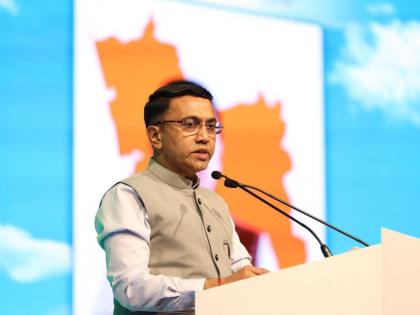Failure to initiate structured public consultation before announcement of a new district in Goa represents an affront to democratic ethos

The phenomenon of gerrymandering redrawing electoral boundaries to favour political interests has long afflicted democratic systems globally. Its most notorious application continues to manifest in the United States. There, recent moves by the Republican Party, allegedly backed by former President Donald Trump, to redraw congressional maps in states like Texas, Georgia, and Florida have sparked constitutional concerns. In Texas, the Democratic lawmakers staged a walkout to block the use of the “nuclear option” which bypassed the quorum requirement in the State Legislature, protesting against a process that allegedly ignored public consultation (Lai, 2021). The core complaint lay in the absence of democratic engagement and the exclusion of opposition voices from a decision that redefined representational balance.
Even former president Barack Obama’s autobiography recounts the chilling consequences of gerrymandering during his early Senate campaigns. He reflects on how district lines were manipulated to exclude communities that formed his voter base, a tactic wielded by entrenched political actors to entrench their electoral grip (Obama, 2020). This historical context lends weight to the observation that gerrymandering, though procedural in form, is politically calculated in substance.
Goa’s third district:
Strategic or subversive?
In an analogous development in India, the Government of Goa has declared its intent to finalise the creation of a third administrative district. While decentralisation and administrative efficiency may serve as ostensible rationales, the opacity surrounding this decision has raised serious democratic concerns. There was no public consultation conducted, no referendum held, and no white paper issued outlining the benefits or ramifications of such a move.
The electorate, particularly in the constituencies proposed to be absorbed into the new district, remains uninformed. Moreover, ambiguity surrounds the criteria used for the selection of these constituencies. Preliminary ground-level assessments suggest that many of these areas may either be strongholds of the ruling Bharatiya Janata Party (BJP) or belong to constituencies held by its closest allies. This selective realignment of territory invites an inference whether this is an administrative necessity or a colourable exercise of power designed to reap electoral dividends in the approaching legislative assembly elections.
Electoral cartography
and political geometry
In both the Texan and Goan contexts, the manipulation of territorial boundaries, without seeking the electorate’s consent, reflects a dangerous erosion of participatory democracy. Electoral cartography must be executed through an inclusive and transparent process. The principles of federalism and democracy demand that the restructuring of districts must emerge from public dialogue and not through unilateral declarations.
India, as a constitutional republic, subscribes to the values enshrined under Article 243G and Article 1 of the Constitution, which envisage local self-governance and territorial integrity. Any deviation from consultative frameworks undermines the legitimacy of such reorganisations. Moreover, the Supreme Court of India has consistently held that mala fide exercise of power or decisions made with extraneous political considerations are liable to be struck down as colourable exercises (K.R. Shenoy v. Udipi Municipality, AIR 1974 SC 2177).
Missing democratic
architecture
No Gazette notification, to date, has disclosed the criteria for selecting the geographical boundaries of the proposed third district in Goa. The absence of a Delimitation Commission’s involvement further compounds the procedural impropriety. District reorganisation, especially when undertaken close to an election cycle, must pass the test of political neutrality.
Unlike the mandated process of electoral delimitation carried out by the Election Commission under the Delimitation Act, 2002, district bifurcation lies within the administrative discretion of the State Government. However, when such power is exercised without adequate consultation, scrutiny, or transparency, the intent behind the reorganisation becomes susceptible to challenge under judicial review.
The right to be consulted in matters that affect one’s political representation forms a vital part of the democratic compact. When the voice of the electorate is silenced in processes that will eventually influence how power is distributed and exercised, the architecture of participative democracy is effectively dismantled.
Therefore, the failure to initiate structured public consultation before the announcement of a new district in Goa represents not merely a procedural lapse, but an affront to democratic ethos.
Towards a transparent
reorganisation framework
While the State Government constituted a committee in November 2023 to study the feasibility of creating a third district, including parameters such as population distribution, administrative viability, and developmental gaps, the outcome of this study has neither been made public nor tabled before the Legislative Assembly. The committee, chaired by the Chief Secretary, continues to deliberate, but no white paper, interim report, or draft map has been released to enable meaningful public engagement. Consequently, the electorate remains uninformed of the rationale and implications of the proposed reorganisation.
To date, no formal feasibility study report has been tabled or published prior to the Cabinet approving the third district proposal. A Committee was indeed constituted by the Government in November 2023, but work on its report continued into early 2025 without public disclosure. The absence of public consultations, hearings, or release of underlying data undermines the claim that public opinion was substantively factored into the decision-making process.
Conclusion drawn
from comparison
The Goan situation, when juxtaposed with the events in the United States, signals an alarming trend of territorial reshuffling as a tool for electoral engineering. Whether in a Texan state legislature dominated by Republicans or a coastal Indian state governed by the BJP, the underlying script remains the same: bypass public participation, mask political intent behind administrative language, and insulate the process from democratic feedback.
Such developments must not be ignored as routine statecraft. Instead, they must be interrogated as constitutional questions that examine whether the actions of the state align with the values of transparency, participation, and representational fairness.